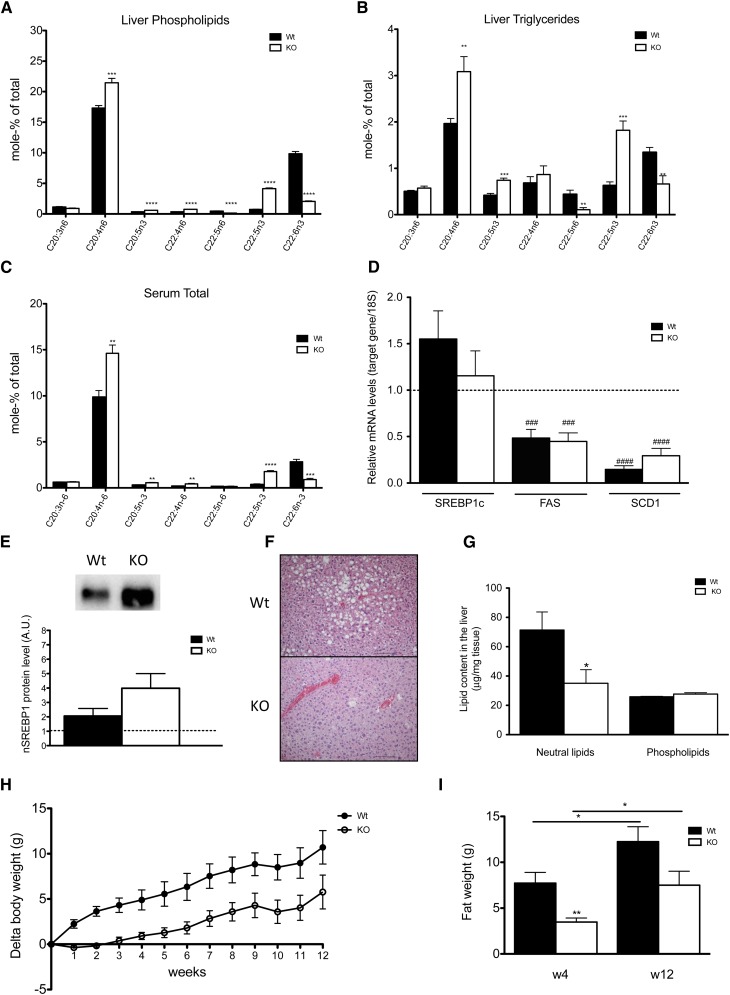Fig. 3.
Resistance of Elovl2−/− mice to diet-induced liver steatosis. PUFA composition of phospholipid pool (A) and TG pool (B) from liver, and total fatty acid composition of serum (C) in wild-type and Elovl2−/− animals fed high-fat diet for 12 weeks. For the % mole composition of remaining fatty acids, see supplementary Tables III–V. Relative hepatic gene expression of SREBP-1c, FAS, and SCD1 (D) in wild-type and Elovl2−/− mice fed high-fat diet compared with values in wild-type mice fed chow diet (dotted line). Immunobloting of nSREBP-1c protein in hepatic nuclear extract in wild-type and Elovl2−/− animals fed high-fat diet compared with values in wild-type mice fed chow diet (dotted line) (E). Microscopic overview (F) of liver tissue from wild-type and Elovl2−/− fed high-fat diet for 12 weeks and of content of neutral lipids and phospholipids (G). Increase in body weight during 12 weeks of high-fat diet treatment presented as delta values for wild-type and Elovl2−/− mice (H). Fat content in wild-type and Elovl2−/− animals fed high-fat diet for 12 weeks measured at two time points: 4 weeks (W4) and 12 weeks (W12) (I). Results shown are means ± SEM of 3–6 mice. Statistical significances are shown between wild-type and Elovl2−/− mice, as well as different time points (* P < 0.05, ** P < 0.01, *** P < 0.001, and **** P < 0.0001) and versus control values (mice fed chow diet) (# P < 0.05, ## P < 0.01 and ### P < 0.001, #### P < 0.0001).

